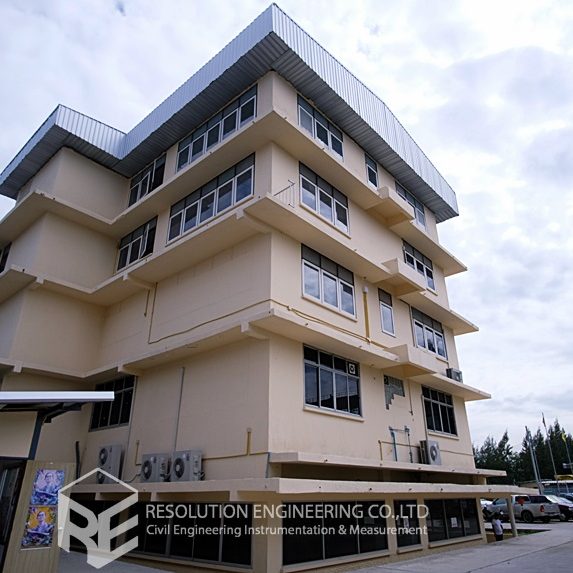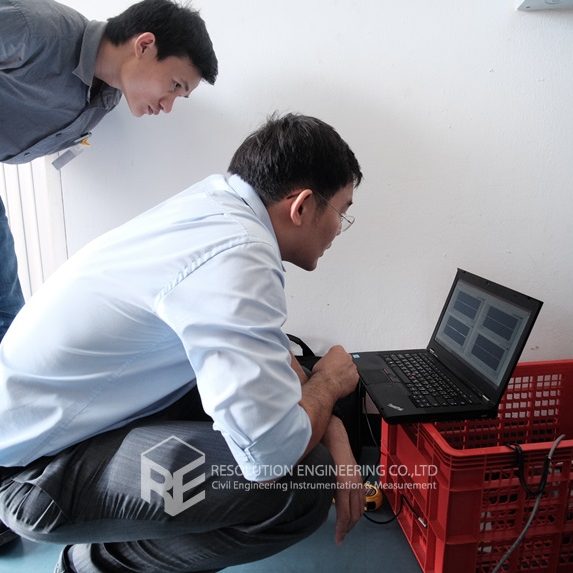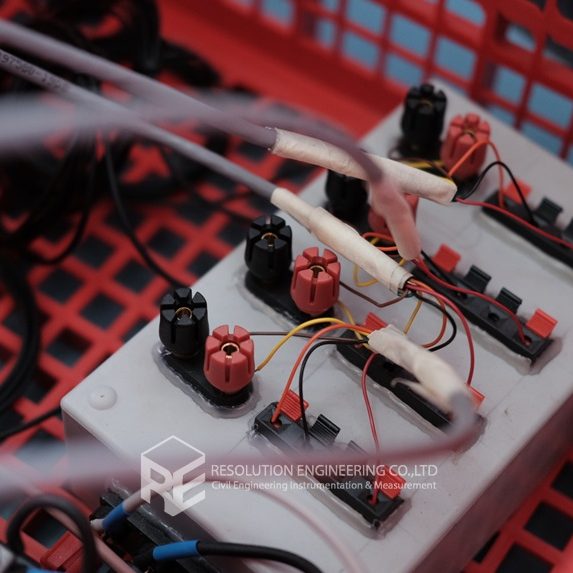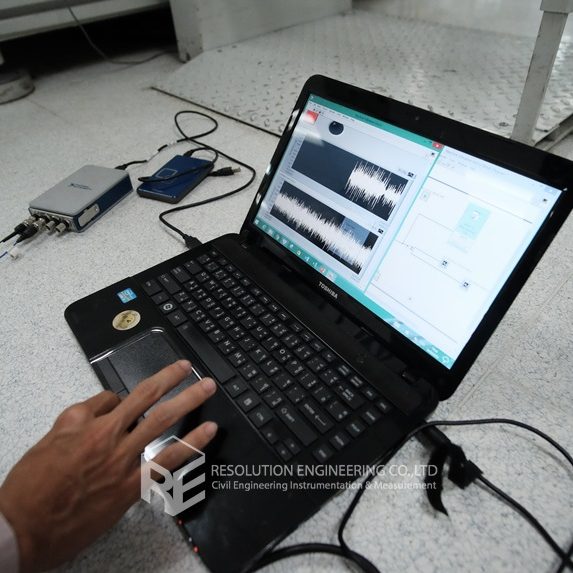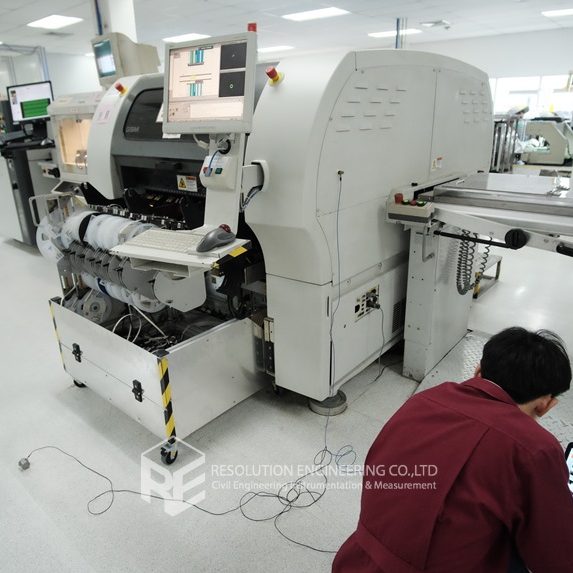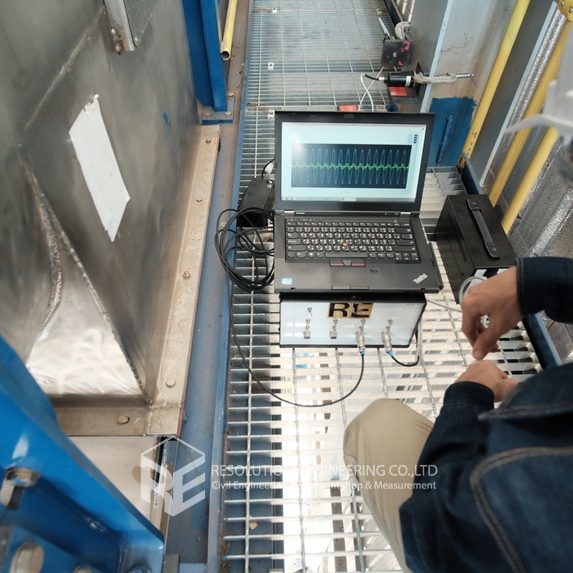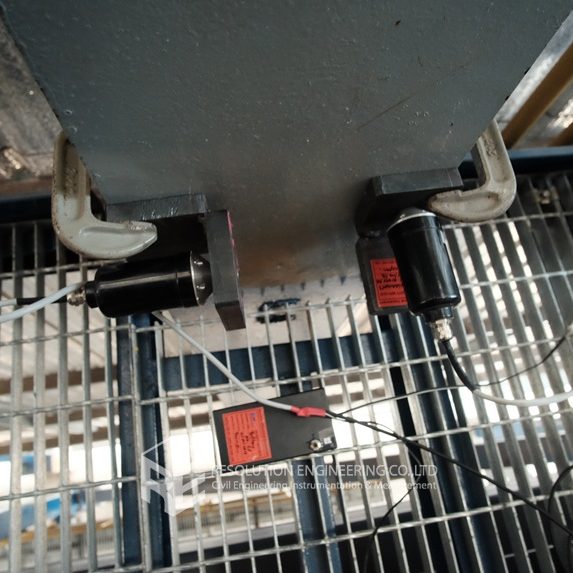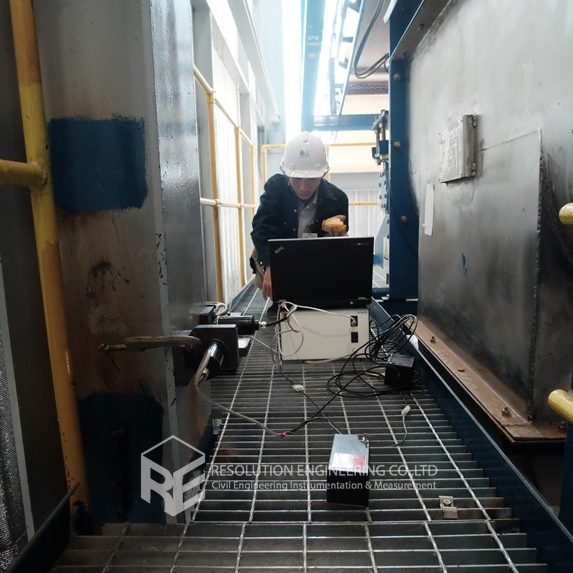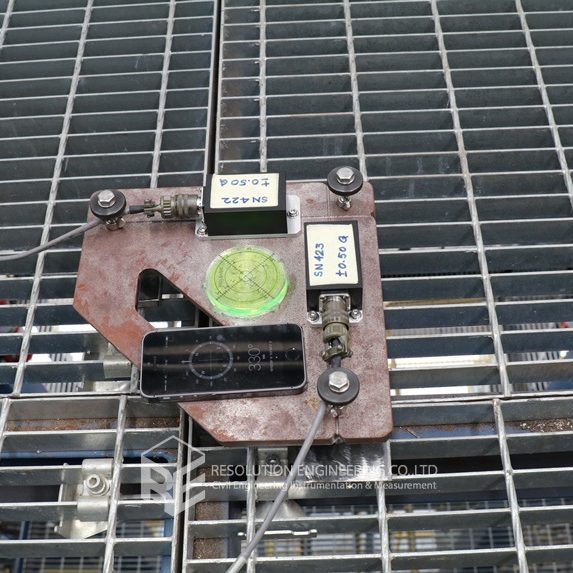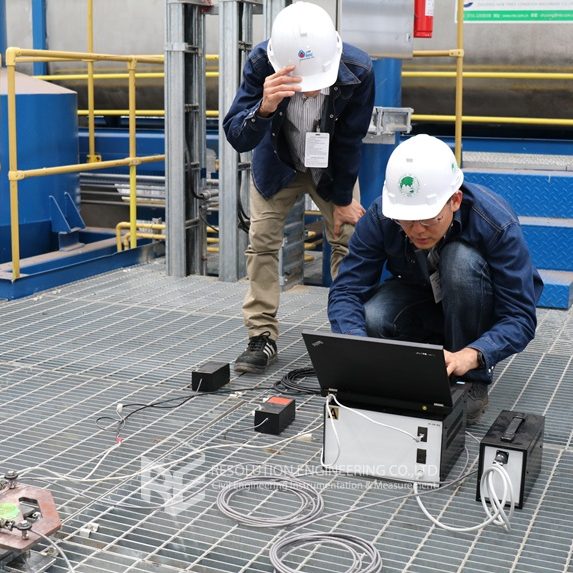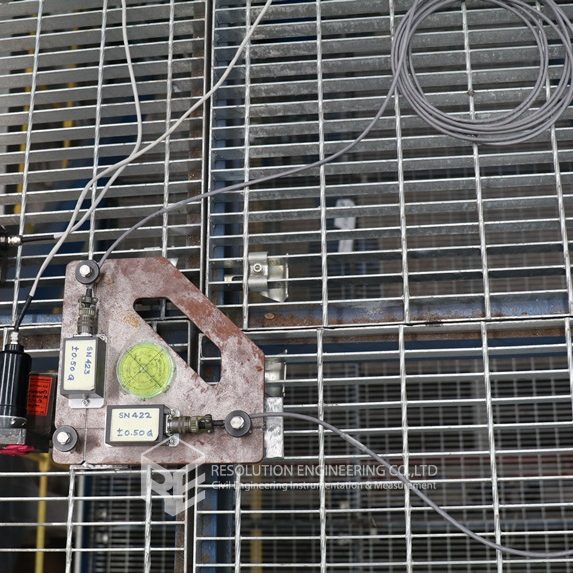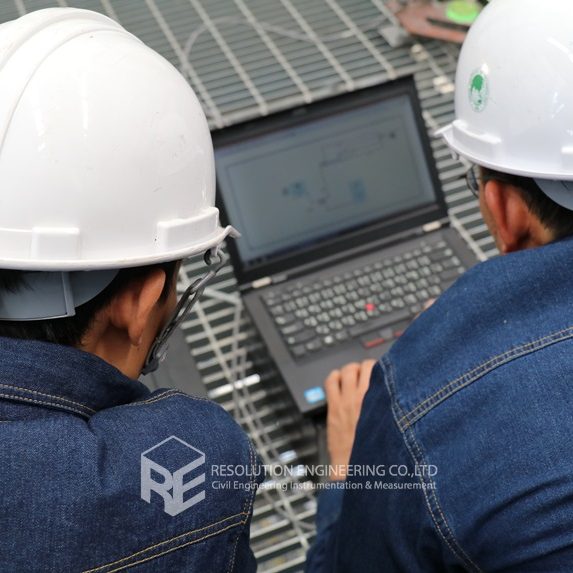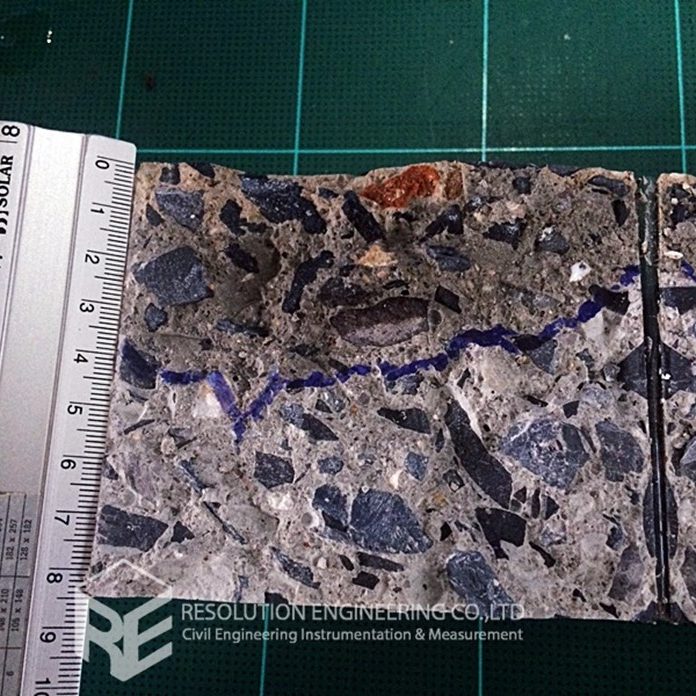Steel structure vibration due to machines
Large machine operations can cause vibration to the supporting platforms as well as the sheltering structures. Vibration is measured, and evaluation is made accordingly. In an example case of this, undertaken by RE, when the machines in the premises started operating, strong vibration was observed in the sheltering structure, and large deformation was visualized in long-slender steel columns. The reason was found to be an accidentally matching between machine vibration frequency and 1st natural frequency of the columns. Resonance therefore occurred.
In order to solve this problem, vibration measurement was conducted through an accelerometer and a dynamic data acquisition system. Data was then analyzed to determine machine vibration frequency and column displacement. The vibration measurement was done at various locations: the machine platform, the base of the column, the column at machine level and the column at the top level. The results showed that, even with the machine vibration at just 0.035g, the column vibration reached 0.1755g. This thus caused the column and siding walls to shake horizontally. Large out-of-plane column deformation was interpreted from the acceleration data to be 0.4 cm, exactly the same as that obtained from visual observation. Slenderness ratio of column in the out-of-plane direction was greater than recommended value stated in the codes of practice for steel design. SOLUTIONS were then GIVEN, and PROBLEMS are SOLVED.


